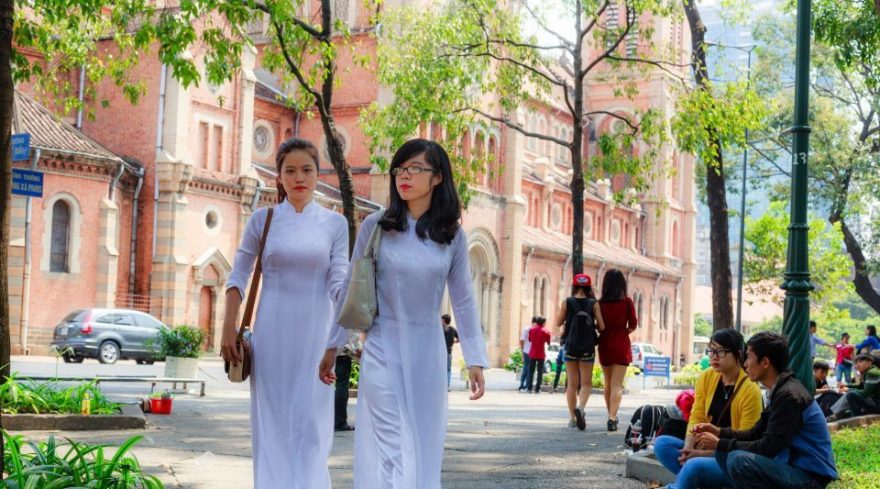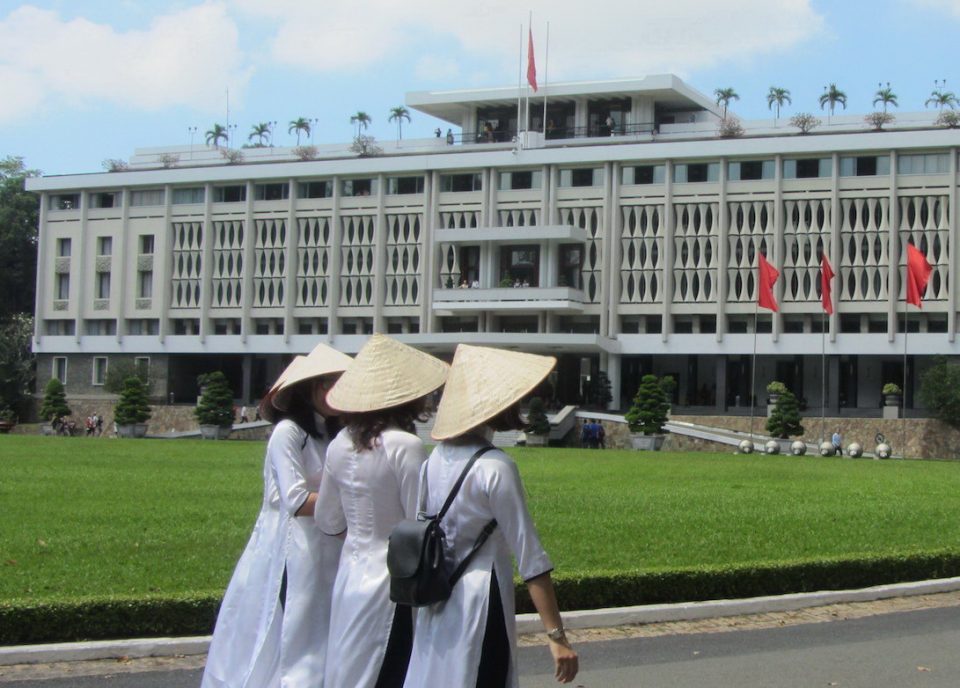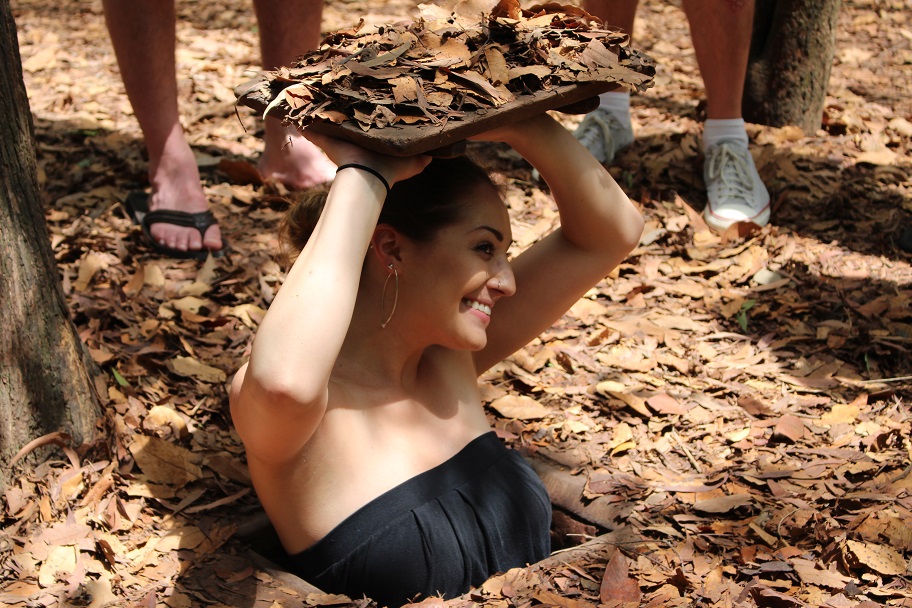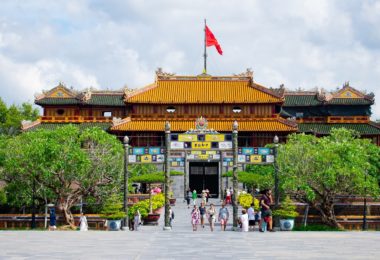Originally called Saigon, Ho Chi Minh City is one of the most vibrant cities in Vietnam. This popular tourist destination has a rich history, culture, and cuisine. This town, consisting of hundreds of squires and thousands of high-rise buildings, still has some of the unique places where you can understand the history of the city. War Remnants Museum is an essential historical and cultural destination and is honored to be one of the most visited museums in Ho Chi Minh City. This article will explore why the War Remnants Museum is a must-see place for a Ho Chi Minh City tour, shedding light on its historical importance, accessibility, and what visitors can expect.
Historical Background of the War Remnants Museum

War Remnants Museum
The War Remnants Museum, a building with such a bright name, was built on September 4, 1975, that is, immediately after the end of the Vietnam War. It was opened to document all the atrocities during the Vietnam War. In the early 90s, the museum’s theme was expanded to cover more aspects of the impact of the Vietnam War on Vietnam and its people.
Today, this museum is the last bastion of reflections on the Vietnam War as it has preserved, accumulated, and stored over 20,000 documents, exhibits, and photographs, recording the horrors and atrocities of the war from the unprecedented cruelty of the government army and U.S. interventionists to the insane perfection of weapons of mass destruction. All this full of death, blood, and tears story is aimed at warning present and future generations of people that everlasting peace is the most precious thing in human history.
The War Remnants Museum started its history as a dark reflection of the Asian wars. Today it is a large museum that is a member of the International Council of Museums. The War Remnants Museum now includes a section in which exhibits are on display that are materials of the global movement of all peoples in their aspiration to support Vietnam’s fight and development.
Location and Accessibility
The War Remnants Museum is situated at 28 Vo Van Tan Street, District 3, in the heart of Ho Chi Minh City. It is hardly possible to find a better place to locate this thematic site since it is advantageous for both local and foreign visitors to the urban area rich in attractions. Fortunately, the museum has universal accessibility features that are characterized by multiple means of transportation to get to the desired location.
First, potential guests may arrive at the museum by public transport, which is undoubtedly the cheapest and unchallenging option. Several bus lines pass near the site. Generally, notable lines are Route 14 from the Eastern Bus Station, Route 06 from Cholon Bus Station, and Route 28 from Ben Thanh Market. Across the city, time schedules, and the cost of travel differ. However, the use of buses is considered to be the most cost-effective.
The second reasonably affordable way of getting to the museum is comfortable ground transportation provided by taxis and Grab. This solution guarantees optimal safety, as well as considerable convenience by delivering visitors to the museum’s entrance directly to the designated place. Also, an alternative way of reaching the destination on foot along prominent landmarks, such as the Reunification Palace and Notre-Dame Cathedral Basilica of Saigon. A War Remnants Museum is an easily accessed place, equipped with service areas, which have ramps and elevators to make every exposition accessible. Staff assistants are trained to help people with disabilities, in which way, universal accessibility is one of the museum’s principles.
Museum Layout and Exhibitions

Outside the War Remnants Museum
The War Remnants Museum in Ho Chi Minh City is very well-planned in terms of visitor experience. The museum consists of several floors, with each dedicated to a particular aspect of the Vietnam War, and it allows for a detailed walk through the history of the war.
Ground Floor: International Support for Vietnam
One of the sections on the ground floor includes the demonstration of international support for the country. Peace movements, organizations, and peace-loving people from all over the world used to protest against the war. Lots of pictures, documents, and exhibits in the museum show how the inhabitants of our planet tried to keep peace and justice and support the Vietnamese population.
First Floor: War Crimes and Chemical Warfare
The first floor of the museum is dedicated to the darkest part of Vietnamese history. There you can explore the criminals of the war that soldiers committed during the Vietnam War. The “Agent Orange” section consists of toxic photos and exhibits describing the impact of the defoliants on nature. There you can see how the war and the use of chemically poisonous weapons changed the course of history and the lives of different people. The first floor can be disturbing; however, it’s worth seeing that there is such a museum with a terrible history.
Second Floor: Historical Photographs and Artifacts
On this floor, you can find the great bulk of the Vietnam War photographs and artifacts. This part of the museum is touching, it reflects the emotions of people living through those days. The collection includes pictures taken by war correspondents during the conflict, soldiers’ artifacts, and exhibitions of different war equipment. The museum also presents the “Requiem” photo display of Tim Page and Horst Faas commemorating the 134 photographers who died from 1961 to 1975.
Each exhibit within the War Remnants Museum is carefully curated to ensure that visitors gain a thorough understanding of the Vietnam War’s complexities. The museum’s exposition point-by-point introduces particular phenomena of different sides of the conflict. Thus, the visitors are allowed to make a logical or question-driven walk offering the optimal consideration of why such a museum is in the must-visit list of the Ho Chi Minh City tours.
The Emotional Impact of the Museum

Artifacts inside war Remnants Museum
The War Remnants Museum is not just a place where one can learn many interesting and shocking details about the war in Vietnam. It is a truly emotional experience, which would influence anyone. For most of the visitors, the overwhelming feelings are those of empathy and sorrow. No wonder, as anyone would feel desperate while wandering among the exhibits with photographs, which depict the dreadful events of the past and the people, who got involved in the war. The museum is truly an emotional place, but a very effective one.
Visitor Testimonials
The impact of war remnants was a very touching experience for many. A visitor recalled: “The museum took my breath away. The photographs and descriptions were so poignant that I found tears rolling down my cheeks”. The other visitor says, “It was humbling. I was reminded of the sacrifices of so many and also felt that peace is important”.
Fostering Understanding and Reflection
This museum plays the role of an effective educational foundation and helps people realize that it is necessary to have peace. War Remnants Museum, specifically, helps people appreciate the history of their country and think about the horrible consequences that wars bring. The communicated information is based on the actual photographs and documents that validate the atrocities of the war.
The introduction of effective contextual support and actual testimonies helps comprehend and realize: “This is likely the strongest impression you’ll have during your entire Ho Chi Minh tour”. The War Remnants Museum significantly affects the emotions of people who visit it and makes sure humanity will never allow wars to happen again.
Practical Information for Visitors
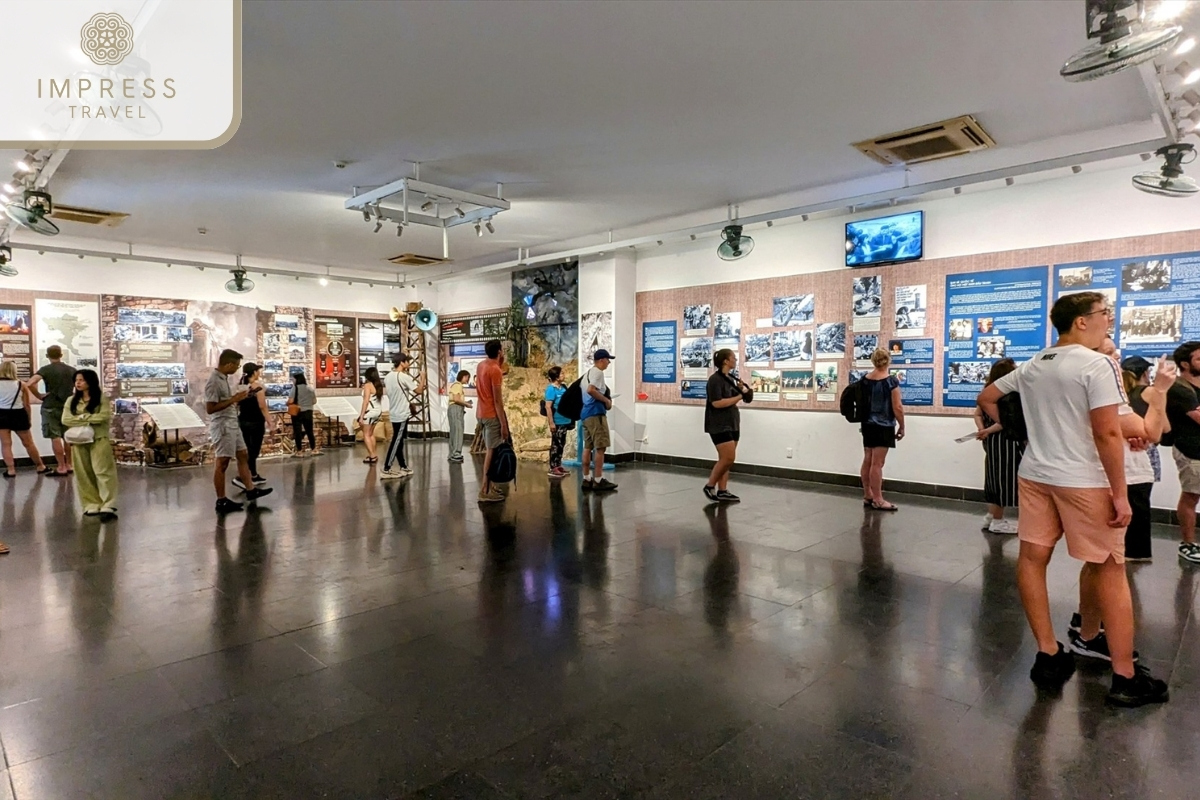
Tourists visit War Remnants Museum
To make the most of your visit to the War Remnants Museum, it is essential to be well-prepared. Here is some practical information to help you plan your trip.
Museum Hours and Admission Fees
The War Remnants Museum is open daily from 7:30 AM to 5:30 PM, including weekends and holidays. Tickets cost around 40,000 VND apiece, and students, veterans, or seniors can get discounts. Free of charge are visits for veterans and warriors, as well as their families and the disabled. Revenge continues for up to 6 years.
Best Times to Visit
I think a good time to visit is early morning and later in the afternoon. This would keep you away from the crowds and help you have a more contemplative experience. It is also better to go on weekdays since it is less crowded than on weekends. You should allocate at least two or three hours for a visit to fully grasp all the exhibitions provided.
Visitor Tips
- Dress Code: Wear respectful and comfortable clothes suitable for a museum. Try not to wear something too casual.
- Photography Rules: Most of the exhibitions can be photographed but avoid using flash. Look out for the signs that show you can’t take photos.
- Behavior Guidelines: Do not act out while in the museum, remain solemn and respectful. The exhibitions are sensitive and should be treated as such.
- Amenities: The museum has restrooms and a small shop where you can buy some souvenirs. It also has a small coffee shop where you can take a break. It is better to carry some water with you.
Activities and Educational Programs
The War Remnants Museum hosts various special events and educational programs, which help to make it one of the most interesting destinations of Ho Chi Minh tours. They are interesting for visitors with different interests and backgrounds and of different ages and allow obtaining a deeper understanding of the Vietnam War and its history.
Special Events and Temporary Exhibitions
Throughout the year, the museum hosts special events and exhibitions, which are dedicated to different aspects of the Vietnam War and its global impact. Special events often bring together veterans, guest speakers, and historians, who share their experiences and views of the war which are not available in the regular exhibits. Temporary exhibitions may also follow other themes, such as the role of women in the Vietnam War, or the experiences of war correspondents. These exhibits are often very distinctive and provide an opportunity to learn something completely new. Since they change regularly, visitors are likely to find something new every time they come.
Educational Programs for Students and Researchers
The War Remnants Museum is an educational museum, which provides a wide list of various programs for students and researchers. First, the museum provides guided tours for school groups, so that children of different ages can receive historical and statutory backgrounds from the guides. The guides working in this museum are very knowledgeable and can both explain the valuable information as well as use the slogans and expressions suitable for children. Another great source of educational information is provided with the help of the archives that the museum can offer. The collections of the War Remnants Museum include very rare documents, papers, photographs, works of applied arts, and other artifacts, which can help for a deep scholarly immersion.
Interactive Exhibits and Guided Tours
There are several interactive exhibits designed to make history come alive and allow visitors to explore the context of the collection through meaning-discovery through emotion and historical perspective. The exhibits are more than just a veneer; they are interactive and truly immersive. The museum also runs narrated tours, available in all the major foreign languages, and these offer visitors the greatest opportunity to get involved or ask questions. These tours are highly recommended, especially for first-time visitors as this way visitors get the most of what the museum has to offer in terms of its animals and exhibitions.
Therefore, the diverse variety of activities and educational programs contribute to the idea that the War Remnants Museum is a must-see place in terms of a Ho Chi Minh city tour. Not only does this mind-threatening subject provide education, but also it helps people inquiring about historical knowledge with a better understanding of the world. Thus, it is a must-see place that should be visited during a Ho Chi Minh tour.
Nearby Attractions and Complementary Activities

External artifacts war Remnants Museum
After visiting the War Remnants Museum, tourists may decide to move to some other Ho Chi Minh City landmarks. The following is a list of places to visit and things to do that will serve as a worthy supplementary or final stop.
Other Historical and Cultural Attractions
Next to the museum is situated the Reunification Palace, which is an essential symbol of the Vietnam War’s conclusion. The palace is guided, and visitors can tour it to learn more about the crucial events that took place on its premises. If tourists are more interested in 19th-century architecture, the Notre Dame Cathedral Basilica of Saigon can also be reached in time ensuing a slight walk. It is a beautiful example of the French colonial expansion contribution to Vietnam’s culture.
Suggested Itineraries
For an intensive, yet informative day plan, tourists might decide to start by visiting the War Remnants Museum and getting an in-depth understanding of the country’s history. Subsequently, another historical place might be of interest – the Reunification Palace, which is close enough for a perfectly balanced walk. After visiting the Palace, tourists can move to the Notre-Dame Cathedral and stroll to the adjacent Saigon Central Post Office to admire the colonial buildings of the city.
Dining and Shopping Options
Since there are many places to visit after finishing a tour around the museum, there are many places where tourists can dine as well. Ben Thanh Market often offers a variety of local dishes along with different things that can be brought home as souvenirs. However, for those who want a more upscale dining experience, Nguyen Hue Street has restaurants and cafes with international cuisine. Moreover, Diamond Plaza, the relatively new shopping center constructed in Ho Chi Minh City, is located just a few steps away from the museum at 34 Le Duan, District 1. Apart from being a good place to shop, Diamond Plaza offers multiple dining venues.
All in all, surrounding the museum with the related facilities and activities allows tourists to incorporate the site into a complex and fruitful visit to Ho Chi Minh City. The museum is a local landmark; however, the area has much more to offer beyond this notable site. Thus, the museum and its surroundings should be included in the most popular itineraries of Ho Chi Minh tours.
Conclusion
In conclusion, the War Remnants Museum is a vivid representation of the Vietnamese ability to withstand the challenges and courageously go through the times of foreign oppression. Its displays are a significant and well-designed source of information for all people interested in the Vietnam War; therefore, this museum is an essential part of every Ho Chi Minh tour. By visiting the site, tourists not only learn more about the events that took place in their unfamiliar but also get a new perspective on the notions of war and peace. Don’t forget to regularly follow our Impress Travel for more interesting information about traveling Ho Chi Minh City to and to book Ho Chi Minh City Tours at the best prices.



































